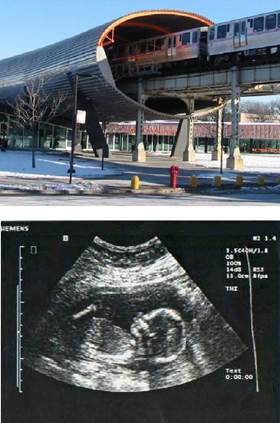74  Electronic Engineering
Electronic Engineering

 SPECIALIST READING A: Acoustics and Acoustical Engineering
SPECIALIST READING A: Acoustics and Acoustical Engineering

11. Read the text. 5 parts have been removed from the text. Complete the text by matching the removed parts 1 – 5 with the gaps a) – e). There is one extra part which you do not need to use.
1. Ultrasonic waves are acoustic waves with frequencies above the audible range (approximately 20 kHz).
2. Engineers dealing with environmental acoustics face the challenge of determining an acceptable level of noise and how noise can be controlled.
3. A scientist who works in the field of acoustics is an acoustician while someone working in the field of acoustics technology may be called an acoustical engineer.
4. A third common technique for room acoustics is the use of masking, i.e. canceling or drowning out other sounds.
5. Refraction is another kind of sound wave bending brought about by changes in the medium through which the wave is passing and not by obstacles in the path of a sound wave.
6. Sound can have significant impacts on human health and well being, and is therefore important to control.

Acoustical engineering is a branch of engineering dealing with sound and vibration. It is the application of acoustics in technology.
Acoustics is the interdisciplinary science that deals with the study of all mechanical waves in gases, liquids, and solids including vibration, sound, ultrasound and infrasound. a) _______________
_________________________________. The word “acoustic” is derived from Greek meaning “of or for hearing, ready to hear”, “heard, audible”. The Latin synonym is “sonic”. The term “sonics” used to denote acoustics and later a branch of acoustics. After acousticians had extended their studies to frequencies above and below the audible range, it became conventional to identify these frequency ranges as “ultrasonic” and “infrasonic” respectively, while letting the word “acoustic” refer to the entire frequency range without limit.
The application of acoustics can be seen in almost all aspects of modern society. Acoustical engineers are typically concerned with the manipulation and control of sound. The primary goal of acoustical engineering is the reduction of unwanted sounds, which is referred to as noise control. b)__________ _____________________.
Noise control principles are implemented into technology and design in a variety of ways. Applications include the design of noise barriers, sound absorbers, silencers, and buffer zones. The implementation of noise control technology differs in indoor and outdoor environments.
Although acoustical engineering most commonly involves reducing noise, it has other important applications as well. Acoustical engineers sometimes produce useful sounds or analyze sound waves to collect information. Examples of this include applications of ultrasonics and infrasonics, which make use of sound that cannot be heard by humans. c) _________________________________
__________________. Applications of ultrasonics include sonar and medical imaging. Infrasonic waves are acoustic waves with frequencies below
 2017-10-31
2017-10-31 247
247








